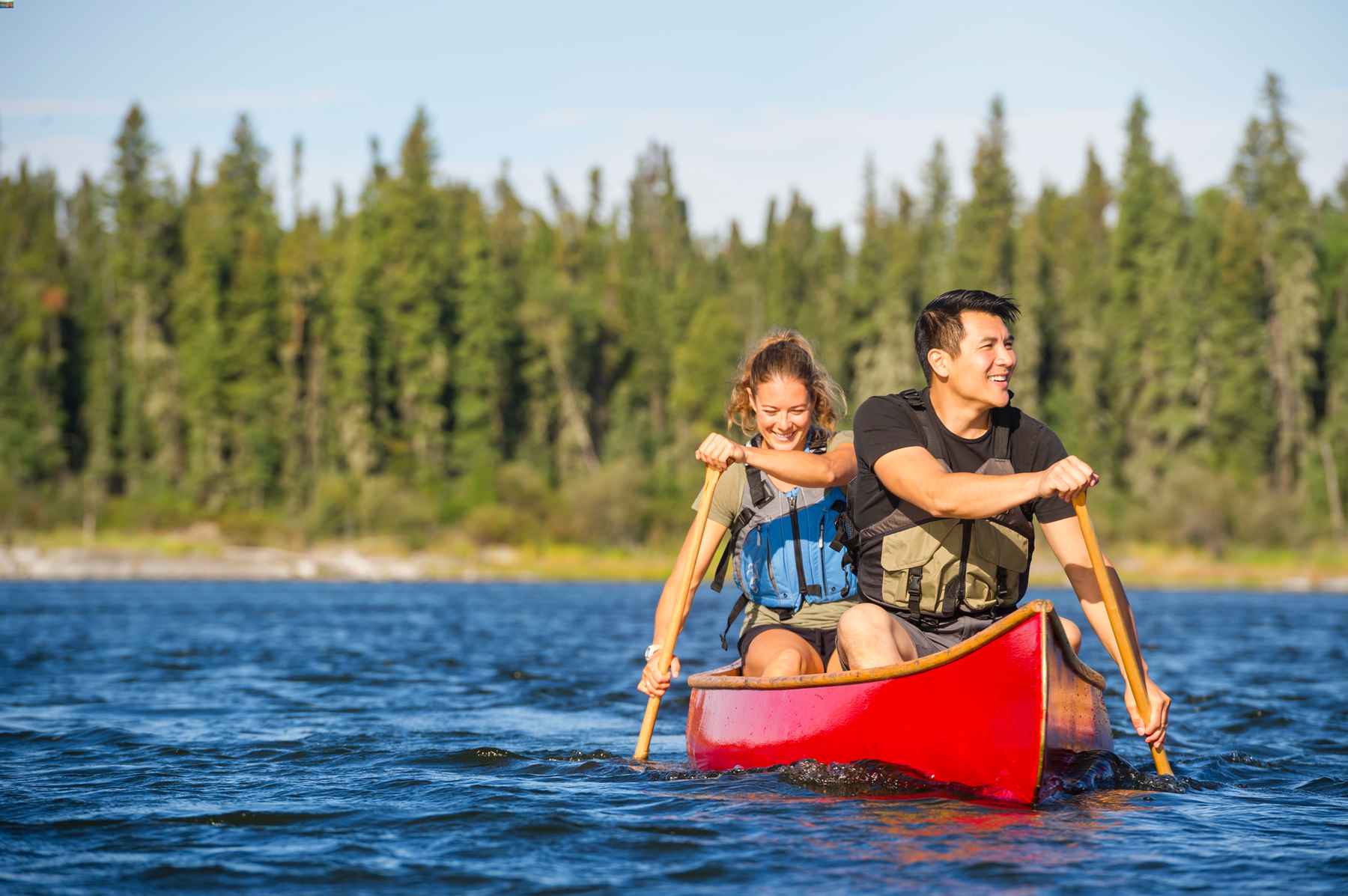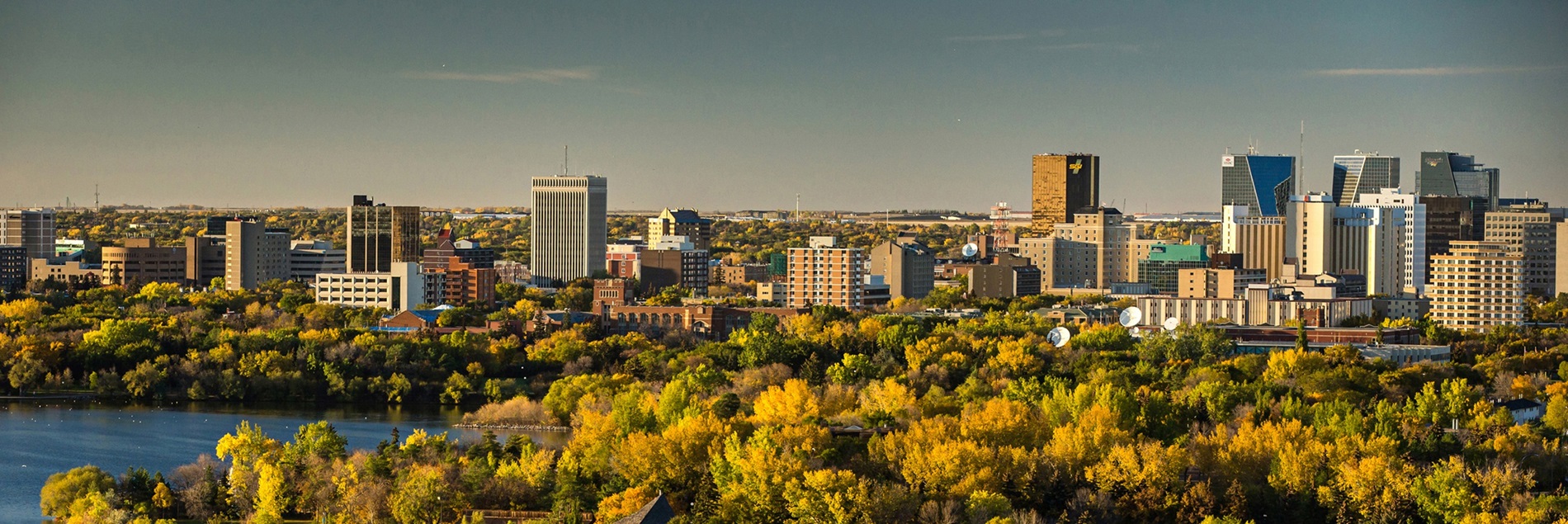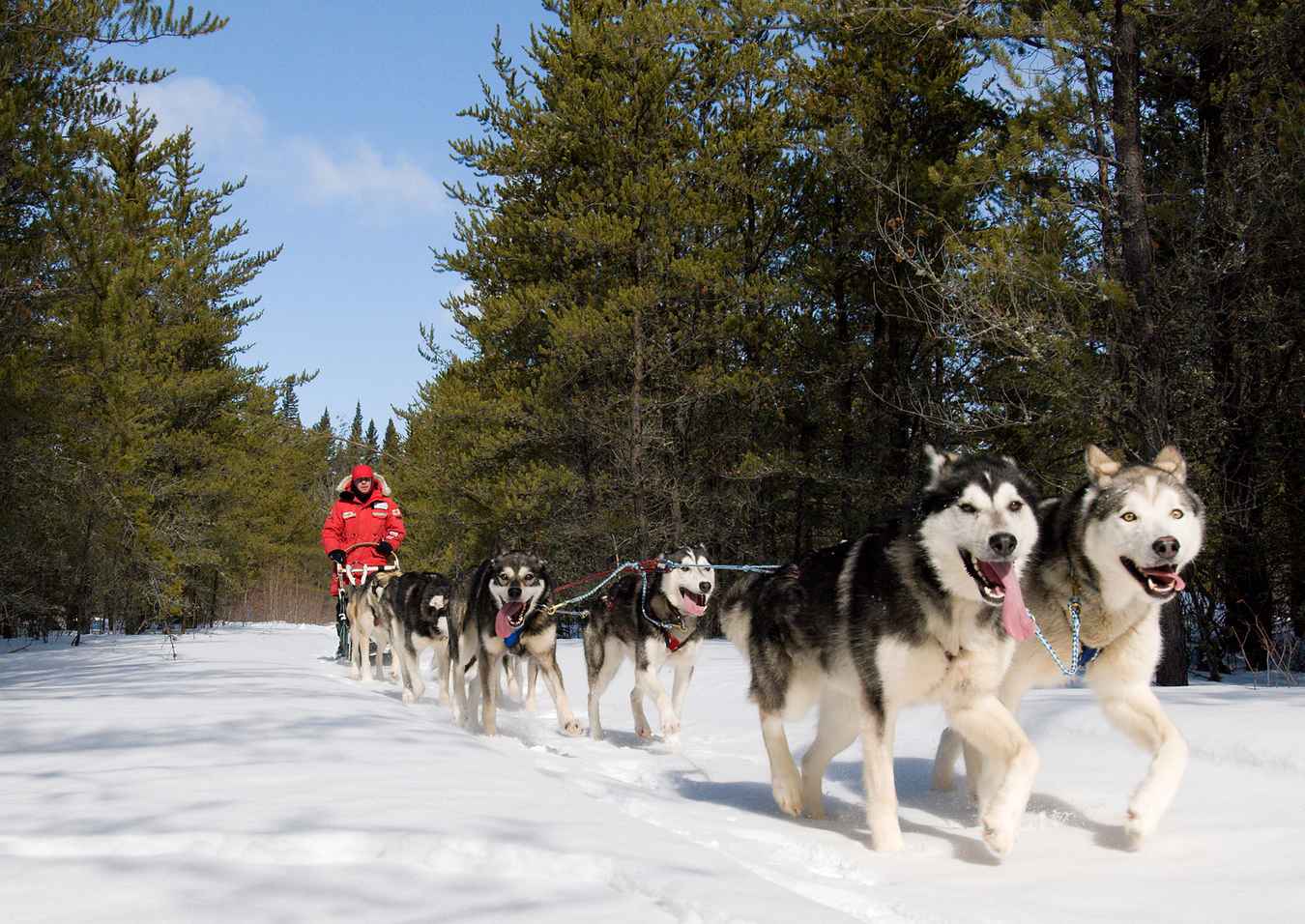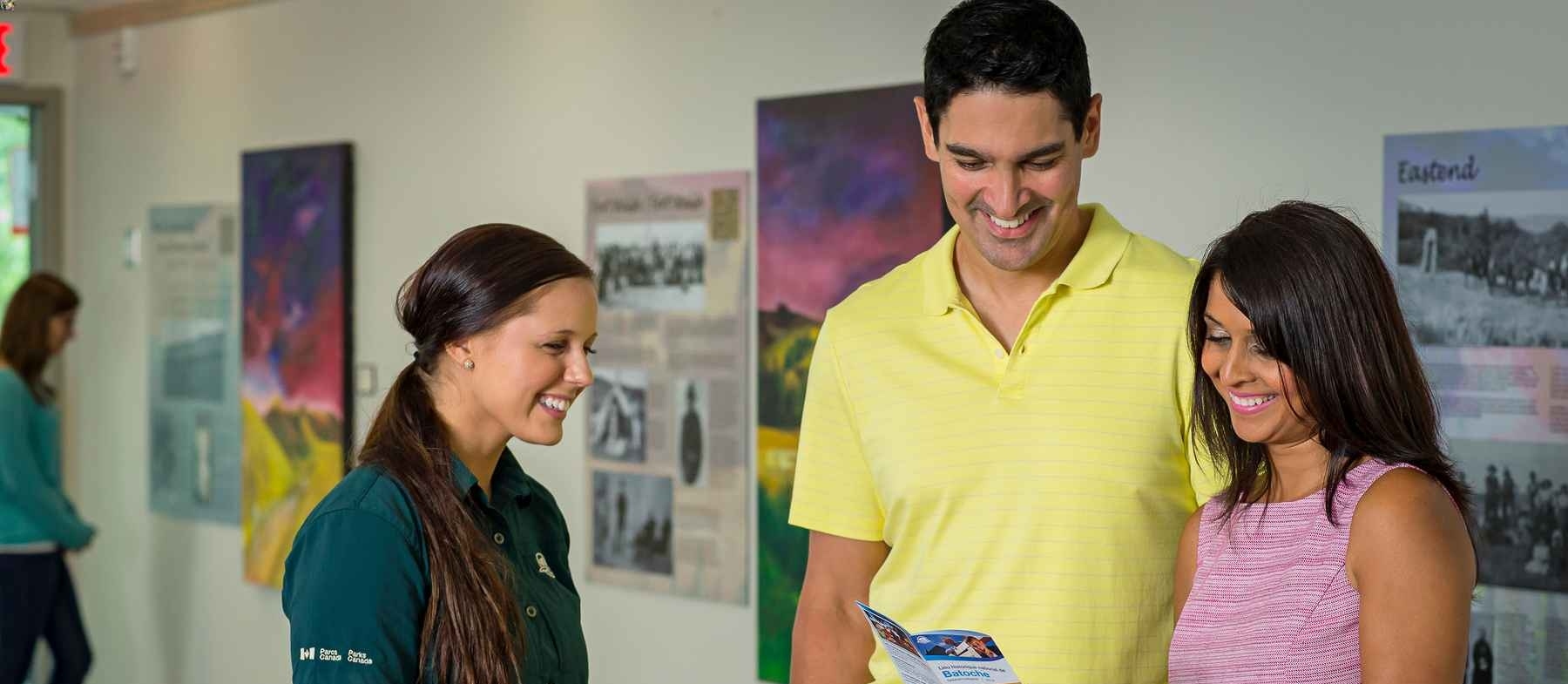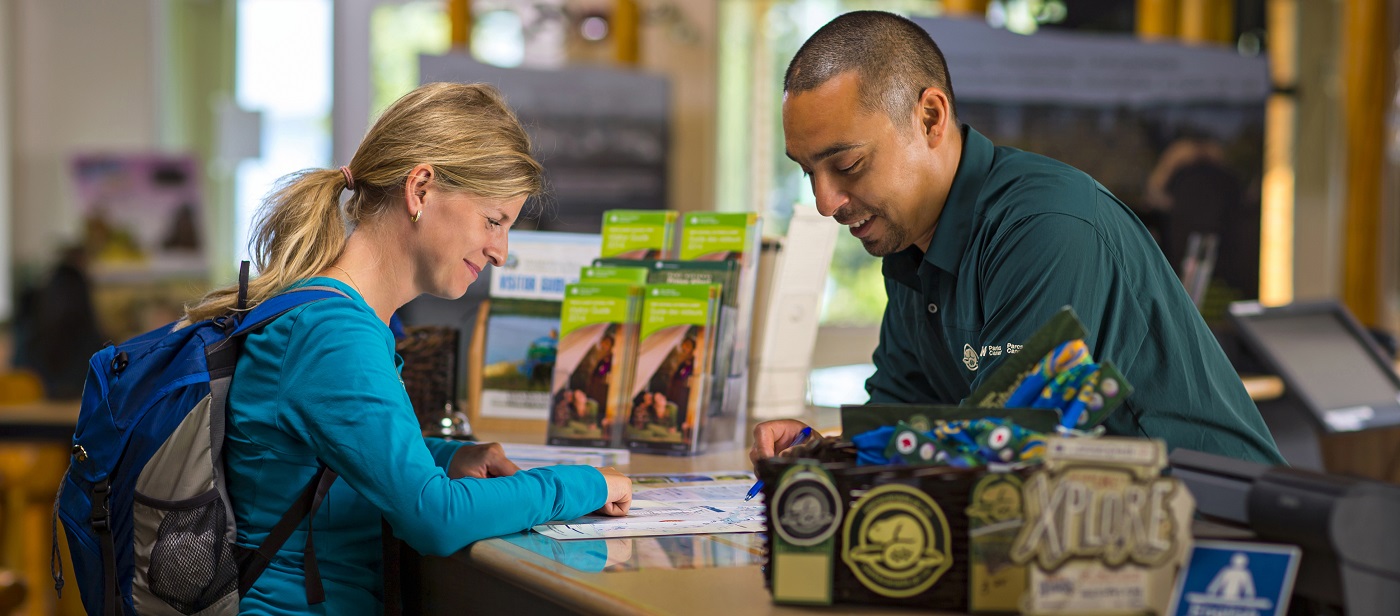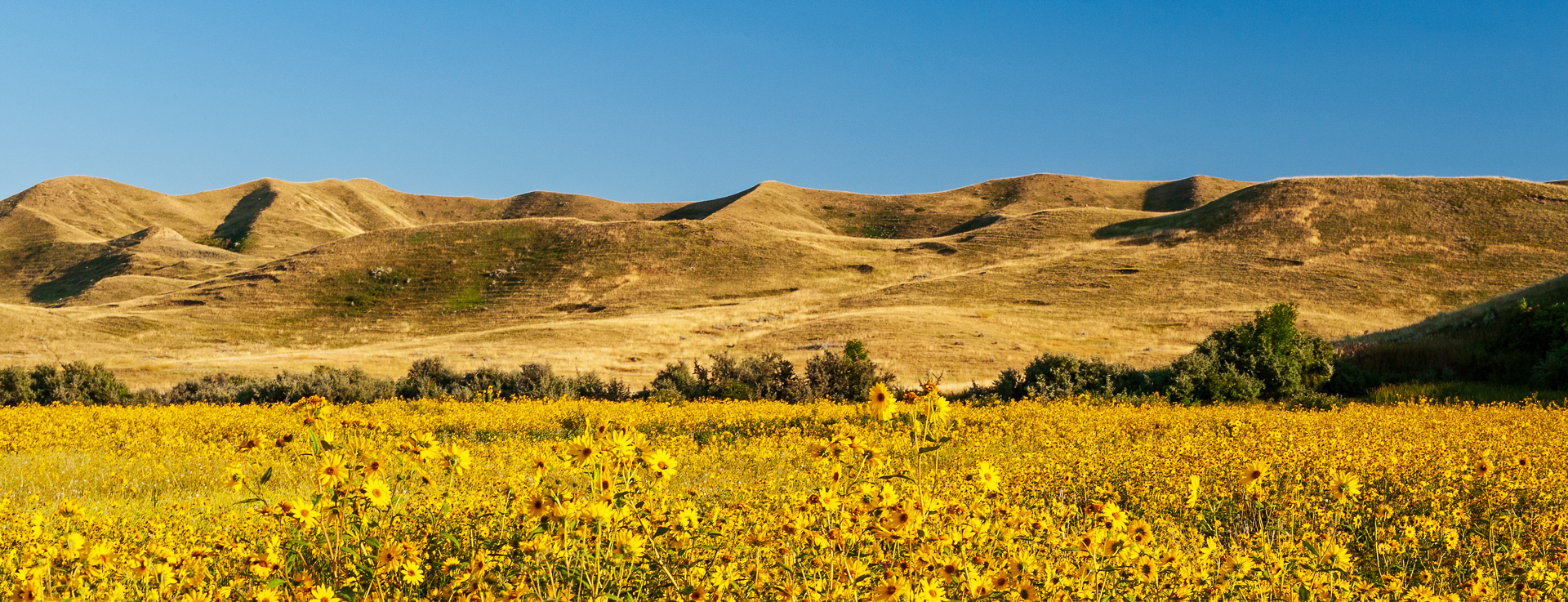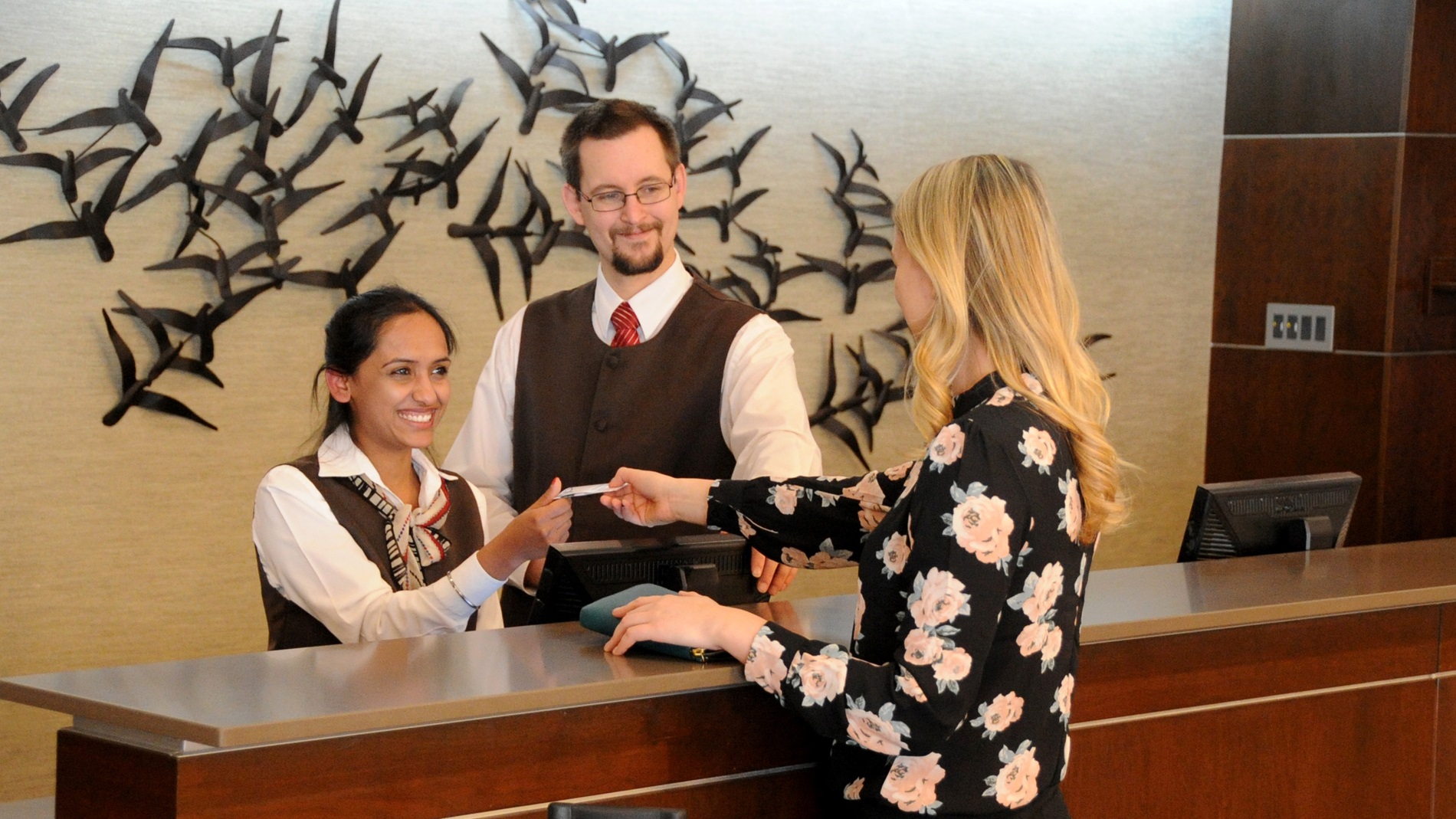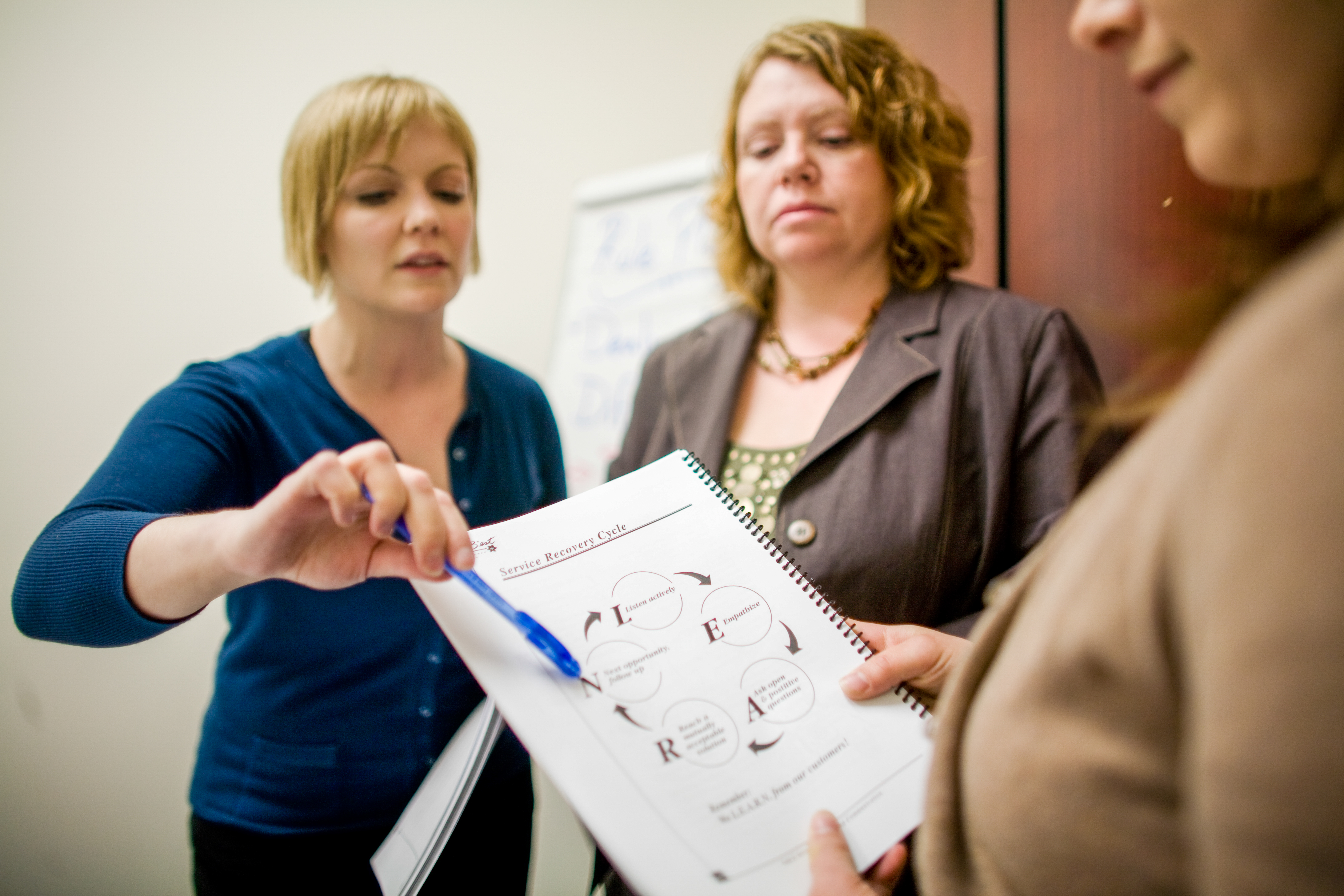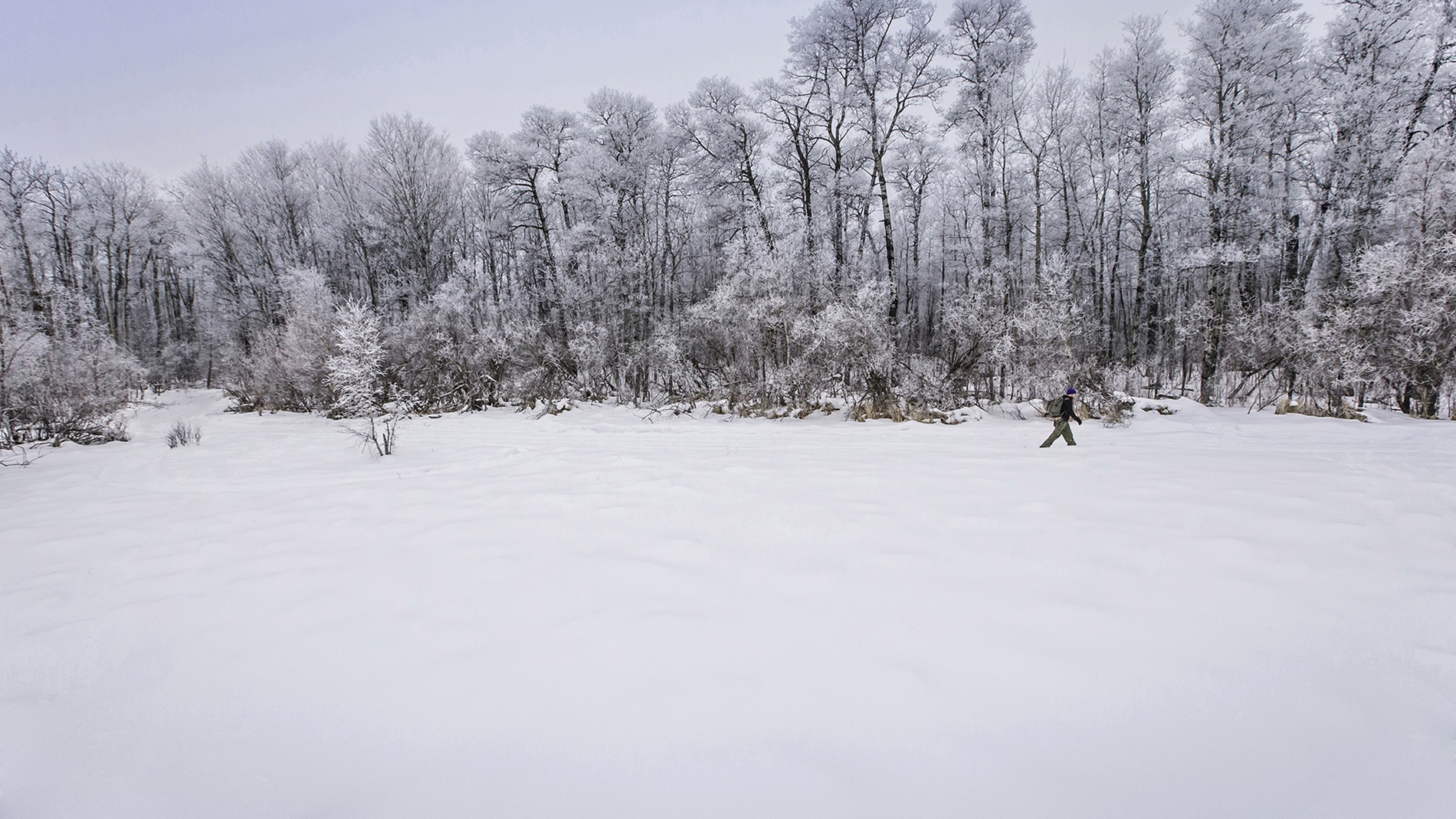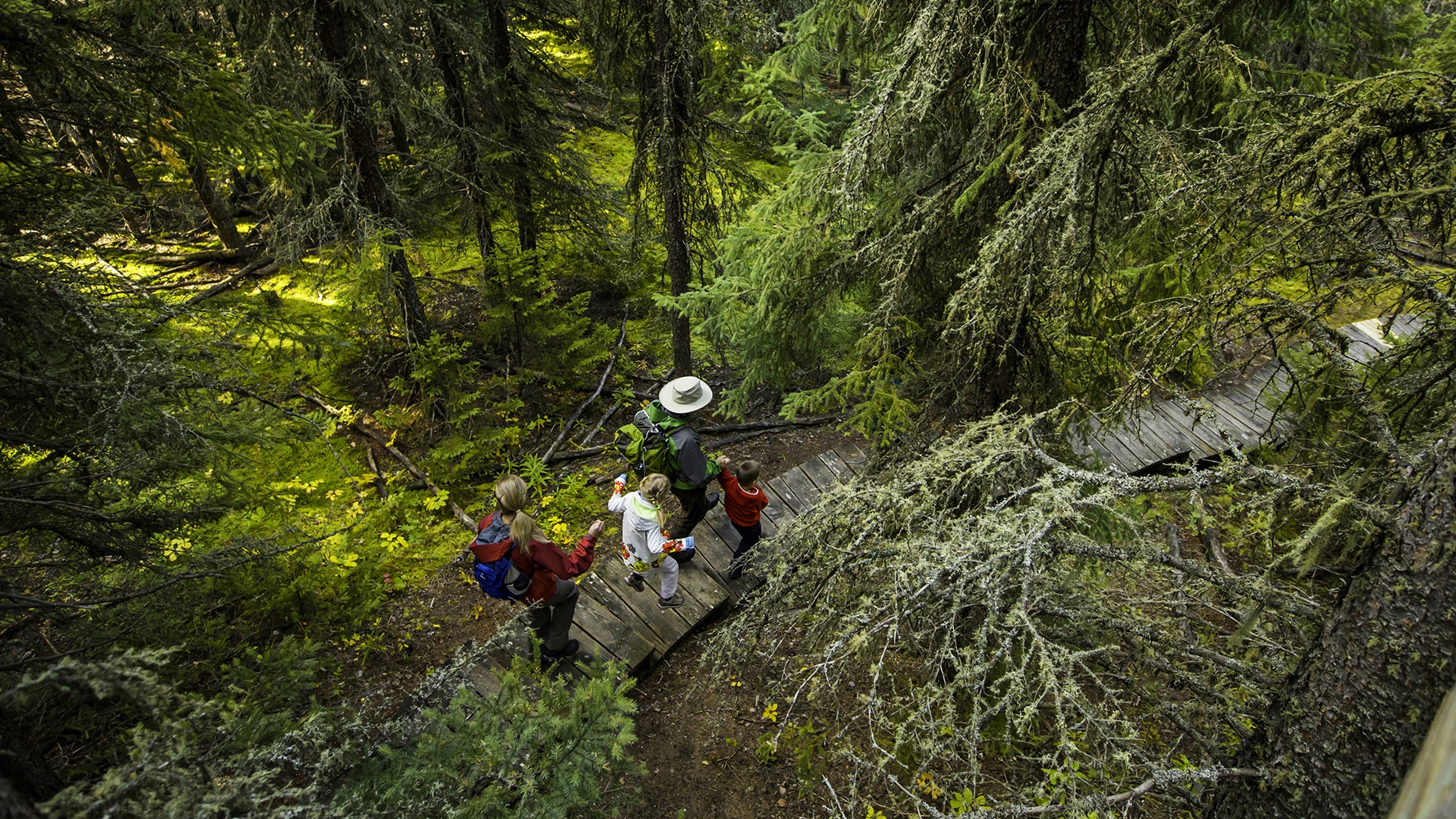In step-by-step fashion, this page discusses the elements involved in developing community tourism plans.
Show me information for:
- Plan Outline
- Tourism Plan Components
- A short introduction that answers the following questions:
- What are the plan’s purpose and focus?
- Who developed the plan and under what authority?
- What does the plan hope to accomplish?
- When was the plan prepared? When will it be monitored and reviewed?
- How was the plan developed? How was public input obtained?
- How should the plan be used? Who will use it?
- Why is the plan important to the community?
- The stated tourism policy for the community.
- A summary of the community's tourism markets.
- Lists of the community's tourism assets.
- Lists of the community's tourism concerns.
- The community's tourism goals.
- The community’s tourism objectives.
- The action steps required to accomplish each objective.
- Plan Format
- Plan Content
- Attractions
- Businesses
- Infrastructure
- Human Resources
- Promotion
- Who Prepares the Plan?
- Committee Meetings
- Establish Meeting Time and Date
- Compile Background Information
- Municipal information – Official Community Plan (OCP), parks and recreation master plan, economic development strategy
- Tourism statistics – tourist information/visitor services centre statistics, campground occupancy data, highway traffic volumes
- Tourism promotional material – local/regional/provincial/federal promotional pieces, online content and/or video productions Tourism Saskatchewan, various government departments and agencies, as well as your local municipal office can provide some of this information.
- Assemble Meeting Materials
- Copies of the Community Tourism Planning Guide
- Adequate tables, chairs and wall space
- Flip chart(s) with plenty of paper and an easel or method of mounting the chart for easy viewing
- General office supplies – felt markers, push pins, masking tape, pens/pencils, notepads (for each member)
- Background information compiled in the previous step
- Coffee and/or refreshments
- Name tags/cards if members are not acquainted
- Copies of the agenda
- Laptop(s) for presentations and recording minutes
- Audiovisual equipment, including a projector and screen (if required)
- Draft Meeting Agenda
- Welcome and opening message by the chair
- Personal introductions by each committee member
- Review of the agenda
- Review of the committee’s terms of reference
- Review of the Community Tourism Planning Guide
- Review of the background information
- Tourism policy
- Selection of a chairperson
- Selection of a recorder (if not provided by council)
- Consideration could be given at this time for obtaining the services of a qualified facilitator
- Review of decisions reached and any assignments made, including the date to be completed
- Date and agenda for the next meeting
- Role of Chairperson/Recorder
- Meeting Follow-Up
- Meeting Documentation
- The chairperson or an appointed member can record lists and group statements on a flip chart or whiteboard for all to see. This can be done in point form as the meeting proceeds, and is a good idea, since it helps keep the group focused on the topic under discussion.
- The appointed recorder will keep detailed minutes for subsequent distribution to committee members. The minutes will form a permanent record of what takes place at each meeting and when steps in the process are completed. The date of completion should be recorded. A laptop computer is useful and convenient for recording, amending and distributing minutes.
- Tourism Markets
- Identify Tourism Markets
- Why do people travel to your community? Is it for pleasure, business or both? Is it to visit friends or relatives, attend an event or participate in an activity? Are they coming to your community to learn something? Do you know how many visitors fall into each of these categories?
- When do people travel to your community? (e.g. weekends, holidays, hunting season, winter, summer)
- How do people travel to your area? (e.g. car, motorcoach, recreational vehicle, aircraft)
- From where do your tourists come? Are they from nearby towns, cities, rural areas, other provinces or other countries?
- Do you know other "demographic" information about visitors to your community? For example, can you put them into categories of age, gender, income, education, marital status, or occupation? If this kind of specific data is not available, make your best guess.
- What knowledge do you have concerning tourism markets in other communities?
- What are the trends in travel and what attracts tourists today?
- Develop Tourism Market Profiles
- Attendees of cultural events/performances
- Campers
- Business travellers
- Cottagers
- Hunters
- Road and utility work crews
- Sports teams and spectators
- Delegates of conventions/meetings
- Golfers
- Anglers
- Skiers
- Snowmobilers
- Motorcoach tour travellers
- Shoppers
- Visitors of friends and relatives
- Ecotourism or outdoor adventure enthusiasts
- Attendees of agricultural fairs/exhibitions
- People seeking professional services (medical visits, business appointments)
- Rank Your Tourism Markets
- How many of each tourist type come to your community?
- How much time does each tourist type spend in your community?
- How much money does each tourist type spending your community?
- Solicit Input from Businesses and Relevant Organizations
- Hotel and motel operators
- Restaurateurs
- Park and campground operators
- Review of the background information
- Service station operators
- Tourist information booth operators
- Hunting and fishing guides
- Indigenous councils or local groups
- Saskatchewan Ministry of Highways and Infrastructure
- Saskatchewan Ministry of Environment
- Saskatchewan Ministry of Parks, Culture and Sport
- Saskatchewan Ministry of the Economy
- Tourism Saskatchewan
- Destination area/destination marketing representatives Municipal officials
- Retail businesses
- Service clubs
- Cultural event organizers
- Tourist attraction operators (e.g. museums, cultural centres)
- Sporting event organizers
- Golf course operators
- Community Futures Development Corporations
- Tourism Assets
- Attractions
- Businesses
- Infrastructure
- Human Resources
- Promotion
- Defining Tourism Assets
- Listing and Ranking Tourism Assets
- How attractive is the asset to tourists?
- How unique is the asset to your community?
- How easily can the asset be promoted to tourists?
- How effective is the asset in attracting tourists to your community to spend time and money?
- Tourism Concerns
- What are Tourism Concerns?
- Negative assets – Check your lists of assets, as well as your Tourism Market Profile Chart. Do either your assets or your markets have any negative features?
- Outright liabilities – Perhaps there is a shortage of skilled employees, which are critical to providing the quality tourism experience visitors expect. Committee members should try to list all concerns, even those that seem insurmountable, because someone else may be able to offer a solution. Even if no solution is found, you will have discussed the matter and put it into realistic perspective for the community.
- Undeveloped ideas – They may include great ideas that have not received action. Again, your assets lists and market profiles will likely reveal interesting suggestions about what could or should be done to increase tourism in your community.
- Few clean washrooms at local service stations (tourism businesses)
- No well-maintained and easy to reach parking areas (tourism infrastructure)
- Interesting attractions are not visible from the highway (tourist attractions)
- Some merchants have not recognized the importance of hospitality and customer service (tourism human resources)
- Listing and Ranking Tourism Concerns
- Issues that have a negative effect on many or all of your tourism markets should rank higher than those that affect a fewer number.
- Consider how much time, effort and money will be needed to address the identified matter. Obvious concerns that can be more easily addressed should rank higher than those requiring a substantial commitment. Capture the easy “wins” first.
- Tourism Goals
- Defining Tourism Goals
- How to Develop Goals
- To improve tourism attractions;
- To improve tourism businesses;
- To improve tourism infrastructure;
- To improve tourism human resources; and
- To improve tourism promotion.
- Tourism Objectives
- Defining Tourism Objectives
- Do not have to be stated as complete sentences
- Should be clear and concise – Would someone outside of the committee or community understand it?
- Should help accomplish the goal to which they relate
- Should be measurable – In six months, will you be able to determine whether an objective has been fully accomplished, partly accomplished or not accomplished at all?
- Should be realistic – Does the objective relate to an existing or potential market? Do you have or can you acquire the resources needed to accomplish the objective?
- How to Develop Objectives
- Identify special tour services in publications and websites produced by Tourism Saskatchewan and local tourism associations
- Contact appropriate tour companies recommended by marketing consultants at Tourism Saskatchewan
- How to Develop Objectives
- Display the necessary flip charts.
- Write your goals in the appropriate column of the Goals and Objectives flip chart sheet. Committee members may follow along on their individual Goals and Objectives Worksheets.
- Take a few minutes to review your Tourism Market Profiles, as well as the tourism assets and concerns lists relating to the goal you are considering.
- Focus on the tourism concerns list and be certain all wording is specific and easily understood, and that all your bases have been covered.
- Make any changes to your tourism concerns list that result from your review.
- Focus on the first concern on the list and determine what should be done to address it.
- Write an objective that addresses this concern (refer to the Sample Tourism Plan for hints on what objectives could look like). Experience has shown that it is often best to write down your first thoughts. Once the committee has something on paper, you can add, delete or amend at will. Do not worry about neatness, this is a time for creative thinking.
- When everyone is satisfied with the wording of the objective, move on to the next concern and develop the next objective.
- When all tourism concerns relating to your first goal have been addressed, display your tourism assets and concerns lists for the next goal and repeat the process.
- Ranking Objectives
- Attract more visitors
- Encourage visitors to stay longer
- Encourage visitors to spend more money
- Minimize adverse social, economic and/or environmental effects
- Produce highly visible results when accomplished
- Appeal to the community at large
- Support the community at large
- Reflect what the community is capable of achieving
- Tourism Action Steps
- Defining Tourism Action Steps
- How to Develop Action Steps
A tourism plan is described as a written document produced on behalf of a community by a group of people representing a broad cross-section of interests. We propose that the plan provide a framework for businesses, local government and other organizations to analyze tourism resources and concerns, and encourage tourism development and promotion within the community. The plan needs to be monitored and reviewed to allow for appropriate changes.
A tourism plan should include a clear vision about why the plan is being developed and a thorough assessment of the current state and future potential of tourism in your community. It should chart a course of action for developing your tourism product and attracting your target markets.
The following components are essential:
A Sample Tourism Plan can be viewed here. It primarily consists of lists and charts. If it is stored electronically in a Microsoft Word document or a PowerPoint presentation, amendments and additions can be easily incorporated and shared amongst committee members and interested parties.
The tourism plan should deal with the five key components of tourism:
The tourism committee, will be responsible for producing a tourism plan and guiding its implementation.
It would be helpful if all members of the tourism committee reviewed this Community Tourism Planning Guide prior to the first committee meeting.
Once you have a commitment from representatives of a broad range of interest groups, it is time to call the first meeting. Being well-prepared and organized will start the process off on the right foot. By gathering relevant information, circulating necessary documents ahead of time and drafting a clear and manageable agenda, you will ensure that your meetings are productive and completed in the time allotted. Remember, a successful meeting is measured by what is accomplished, not by how long it lasts. Fatigue will set in and productivity will wane if meetings exceed two-and-a-half hours.
The steps involved in organizing tourism committee meetings are outlined in further detail as you continue to read on.
The meeting could be set by the municipal council, which might assign a person to notify other committee members of the details. The council may also provide initial leadership to start the process. At this time, it is recommended to secure a suitable meeting space, source required audiovisual equipment and book any required catering
For the first meeting, compile as much pertinent background information on tourism in the district as possible. The assigned resource person could make a valuable contribution to the committee by compiling relevant information, which may include the following:
For each meeting, the committee should ensure that they have the following resources readily available:
An agenda serves to keep the meeting focused and to assist the chair if the group strays off-topic. The agenda for the first meeting should be distributed to committee members in advance of the meeting date and should include:
During the course of this or other meetings, questions may arise that committee members cannot answer. The chairperson, in consultation with the group, can seek answers to these questions by assigning responsibility. Designated committee members can collect pertinent information and report back to the committee within an agreed-upon time frame.
Throughout the meetings, there will be a need to keep track of what has been discussed and approved. Establishing and maintaining a record of committee activities can be done as follows:
 Before tourism can be developed or promoted, you must have reliable information on tourism as it exists today in your community. You need to find out who visits your area and why. The answers will determine your tourism markets.
Before tourism can be developed or promoted, you must have reliable information on tourism as it exists today in your community. You need to find out who visits your area and why. The answers will determine your tourism markets.
Before addressing the task of listing your markets and describing or profiling them, spend a short period of time in open discussion about your community's tourism policy.
Think about what you are trying to achieve through your tourism policy. Your policy may state that you want tourists to increase their length of stay and the amount of money they spend in your community. What kind of information will you need to help meet the objectives of your policy?
Tourism Saskatchewan has assembled market segment profiles for Canadian leisure travellers. You can view them here.
During your general discussion of tourism markets, the committee should consider the following questions about your current visitors:
A general discussion of all of the above is worthwhile. Remember to think in terms of your own community and the area in which it is located. Keep in mind that throughout the entire planning process, the tourism plan must take into consideration your community's regional context.
Many of your tourism markets will be similar to those of nearby communities. Although you are developing a tourism plan for your own community, many of the objectives you will eventually develop may entail working and cooperating with other communities.
Dedicate about 30 minutes to a general discussion of tourism markets at this meeting of the committee. In the next step, you will develop your tourism market profiles.
To put tourism markets in focus, the committee must develop tourism market profiles, which describe the types of tourists who currently visit or pass through your community. Visitors or tourists can be categorized according to their reasons for travel:
Types of tourists will vary from community to community. Information about the types of tourists visiting or passing through your community should be tabulated, using a chart similar to the Tourism Market Profile Chart which can be found here.
A copy of this should be drawn on a flip chart or whiteboard for use during the meeting. As tourism market profiles are developed, the chairperson or an appointed member should fill out the chart. You could distribute individual blank copies of the Tourism Market Profile Chart to each participant to work through as a group.
Use a pencil when marking individual charts or have additional blank charts available. Changes to the profiles may occur later in the planning process as input is sought from businesses, museum societies and other relevant organizations.
As you proceed with your profiles, the chairperson should ask all committee members for input on what types of tourists visit or pass through your community. The tourist types should be recorded along the left margin of the Tourism Market Profile Chart.
Next, the chairperson should ask the committee if questions beyond those appearing along the top margin of the chart should be included. Additional questions should be recorded in the spaces available.
The committee can now profile tourism markets by simply answering each question about each tourist type and filling in the blanks. If some of the questions are difficult to answer, the committee should make its best guess by consulting the reference material that was gathered for the meeting and making use of committee members’ knowledge about visitors to the area.
Once questions related to each tourist type have been answered, record the information. It will form an important component of your tourism plan. To complete the chart, rank each tourism market in order.
Ranking your tourism markets is beneficial for several reasons. Through the exercise of ranking, your major markets will become readily apparent. The results of these rankings are valuable later in the planning process when the committee must decide where to concentrate its efforts. Ranking your markets is also important because it stimulates more thought and discussion regarding this very vital element of the tourism plan.
Determine the importance of each of your tourism markets (types of tourists) by exploring the following questions:
You do not need exact figures to apply these criteria. To illustrate, simply determine whether anglers are more or less important to your markets than sports teams and spectators.
Indicators for ranking tourist types appear in spaces along the left-hand side of the Tourism Market Profile Chart.
A grading system can be used if the committee has difficulty determining rank. Committee members individually grade each tourist type on a scale of one to 20. Twenty represents the highest importance, one represents the lowest. Grading is done independently and the results are passed on to the chairperson for tabulation.
Here is an example of how it works:
Eight committee members grade a tourist type as follows:
First member gives a grade of....................8
Second member gives a grade of.............12
Third member gives a grade of ................15
Fourth member gives a grade of................9
Fifth member gives a grade of .................17
Sixth member gives a grade of.................13
Seventh member gives a grade of ..........14
The chairperson gives a grade of.............10
Total..........................................................98
Once the committee grades all tourist types, the highest totals will surface as your top tourism markets.
The market with the highest total is the most significant and should be ranked number one on the Tourism Market Profile Chart. The market with the second highest total should be ranked number two and so on.
In the event of a tie, a simple show of hands should suffice to reach a decision.
Keep in mind, the above procedures for ranking or grading will apply not only to tourism markets, but also to assets, concerns and objectives that will be dealt with later in the planning process.
Once the Tourism Market Profile Chart is complete and your markets have been ranked, you will be ready to check the validity of your work.
Prior to the next committee meeting, the chairperson should assign members of the committee to contact relevant businesses, organizations and individuals such as:
When these businesses and organizations are reached, committee members should provide them with copies of completed Tourism Market Profile Charts and ask for input. This is also an opportune time to explain the tourism planning process.
Mention that assistance would be appreciated at this stage and suggest that there will be further opportunities for input when a draft tourism plan has been formulated. Ask what tourism promotional activities are currently underway and what is planned for the future.
Additions or changes that result from talks with others in the community should be discussed at a subsequent committee meeting. A record of any approved changes or additions should be made at that time.
The next step is to list your community's tourism assets.
This part of the process features a brainstorming session by the tourism committee. The session is aimed at developing five lists that will include all of the tourism assets in and around your community. The lists will correspond to the five components of tourism:
Tourism assets should be confined to those community assets that can or do attract and serve tourists.
Your community may have a high school, a new grocery store, a recently expanded library and an RCMP detachment – all of which constitute community assets. However, none of these relate directly to tourism unless the asset is somehow unique. For example, a retail outlet that is housed in an historical building would qualify.
Mark five flip chart sheets with an asset category corresponding to the five components of tourism.
The chairperson can ask the committee to either brainstorm the community’s tourism assets or offer suggestions, one by one, until all possibilities have been explored.
Keep in mind that assets can be placed under more than one category. This is helpful if the committee has difficulty deciding where an asset fits. Also, tourism assets do not necessarily have to be within your community. For example, tourists travelling through your area may be going to or coming from an attraction, such as a national or provincial park, that is some distance away. In this instance, the park should be recorded on the Tourism Attraction Assets list.
Once you have established a list of assets for each of the five key components of tourism, each list should be ranked.
Your tourism assets should be ranked to highlight the community's tourism strengths. You will want to build on these when it comes time to establish your tourism objectives and tourism action steps. When considering the importance of tourism assets, the committee should ask the following:
The chairperson should lead the group in ranking the tourism assets that have been identified for each of the five components of tourism. The importance of each asset should be designated by assigning it a number. Rank the assets, one-by-one, from most important to the least. For example, consider all of the assets listed under Tourism Attraction Assets and number accordingly, then move on to Tourism Infrastructure Assets and so on.
If difficulty arises during the ranking of any tourism asset, you can use the grading system described above.
The committee is now ready to compile five lists of the community's tourism concerns. Again, one list is needed for each of the five key components of tourism. Before starting your lists, you must understand what is meant by tourism concerns and how they relate to your markets and your assets.
Tourism concerns can include:
It is important to consider both the positive outcomes and the challenges of proposals for increasing tourism. When rephrased negatively, a great idea can become a concern.
 The committee should make every effort to be as honest and explicit as possible when listing tourism concerns. A statement such as "Visitors just pass right through town, nobody ever stops here," is much too general to be listed as a tourism concern. It may, however, have aspects relating to each of the five basic components of tourism. For example, visitors may not be stopping in town for several reasons:
The committee should make every effort to be as honest and explicit as possible when listing tourism concerns. A statement such as "Visitors just pass right through town, nobody ever stops here," is much too general to be listed as a tourism concern. It may, however, have aspects relating to each of the five basic components of tourism. For example, visitors may not be stopping in town for several reasons:
Any one of the above could be listed as a concern. If you have difficulty categorizing a particular concern under the five key components of tourism, it probably has not been stated specifically enough.
Remember, the more specific you are in expressing your concerns, the easier it will be to find a solution.Remember, the more specific you are in expressing your concerns, the easier it will be to find a solution.
To list and rank tourism concerns, use the same procedures you followed for tourism assets. Create five lists of tourism concerns – one for each of the tourism components. If you have sufficient wall space, keep your tourism assets lists and the Tourism Market Profile Chart posted for easy reference.
Once each list is complete, the concerns should be ranked. By ranking, your biggest concerns will receive the attention that they deserve. When it comes time to seek municipal and public input on your tourism plan, it will become readily apparent if your principal concerns are in line with what others think. As an added benefit, if the committee identifies easily addressed concerns that can lead to highly visible and positive results, they can be used to bolster community support for the committee’s work.
The following criteria apply to determining the importance of tourism concerns:
Again, if the committee experiences difficulty when ranking concerns, use the grading system described above.
When this stage of the process is complete, the committee should have lists of valuable information and a reasonably good understanding of the community's tourism markets, assets and concerns, and how they relate to each other.
The recorder should make sure this background information forms part of the committee's minutes.
Your next step is to state your community's tourism goals.
Tourism goals are clear, concise statements that broadly outline what the committee would like to see happen to tourism in the community. All goals must be compatible with the community's tourism policy and should provide direction for more specific objectives to follow.
A simple way to state tourism goals is to insert the words "to improve" in front of each of the five basic components of tourism. Thus, the committee's goals would be:
By stating tourism goals in this fashion, the committee is assured that all the tourism concerns (also stated in relation to the five components) will be considered.
Tourism objectives are more specific than goals. They are the stated desires of your committee and represent the ends to which community action should be directed. If acted upon, tourism objectives will help you accomplish your tourism goals. Each tourism goal will likely involve several tourism objectives.
Setting objectives is a difficult, but necessary process. The following guidelines will assist the committee in determining them.
Tourism objectives:
Examples of tourism objectives can be found in the Sample Tourism Plan here. The committee should set aside a few minutes to read over the sample objectives provided. When this brief orientation is complete, you should be ready to develop objectives of your own.
Focus on one goal at a time. As you develop objectives for each of the five tourism components, be sure to have the Tourism Market Profile Chart and the corresponding list of assets and concerns posted for easy reference. For each tourism component, reproduce the Goals and Objectives Worksheet on a separate flip chart sheet.
Each objective is formed by restating one concern as a positive statement that will help to accomplish the tourism goal. It may be possible to have one well-worded objective that will adequately deal with more than one concern.
Avoid wording that is so broad or general that the objective becomes difficult to fulfil or measure.
In determining objectives, examine the relationship between the needs and wants of your tourism markets and the tourism resources of your community. For example, your community may be on a frequently used route for motorcoaches travelling along a major corridor. What are the needs and wants of these travellers? Motorcoach operators often want accommodations that provide quality service, competitive rates and restaurants capable of serving larger groups.
You may have these assets and wish to establish an objective such as “to increase motorcoach stopovers in our community from five this year to 20 stopovers next year.” You might consider the following action steps to achieve that objective:
Your community may be an attractive location for shopping, business conferences or outdoor activities. An objective might be: “To increase the number of visitors to our community for shopping, business conferences, etc.” Newspaper ads, highway signs, store or mall displays and many other promotional options are additional actions that could help you achieve your objectives.
You can promote a service or an attraction in a number of ways. You will have to choose the option(s) appropriate to your tourism policy, the specific tourism market(s) you are trying to reach and your community's financial and human resource capabilities.
As you establish objectives, always consider your tourism markets, assets and concerns, and think about how realistically you can satisfy the market needs that you have identified.
The process for developing objectives should unfold as follows:
As you continue, make sure the committee's recorder captures the conversation accurately. When you are satisfied that the concerns have been properly stated and addressed with objectives, you are ready to start ranking the objectives. To avoid fatigue, committee meetings should not exceed two-and-a-half hours. Consequently, you may decide to rank the objectives at your next meeting.
The procedure for ranking objectives differs from the process that you used to rank tourism assets and concerns. Objectives are ranked together regardless of the tourism goal to which they relate.
To rank objectives, make use of the grading system described above. Following this procedure, as you grade each objective you are also determining the rank. To start with, the committee should rank only about 10 objectives in order of priority (one being the most important and 10 being the least).
A priority list of 10 objectives is recommended to provide direction as to what the committee wants to initially achieve. All remaining objectives should be considered of equal importance and may be addressed whenever the committee wishes.
Ranking your objectives is a very worthwhile exercise. For everyone who will review the plan, the process highlights what the committee feels are the community's tourism priorities. When it comes to implementing the plan, the committee will be able to assign responsibility and develop timelines quickly and appropriately.
To begin, display your Goals and Objectives Chart and look at all of the objectives together. The following criteria will help you to assess and prioritize your objectives. Consider how effectively they:
There will be both short-term and long-term objectives. Short-term objectives are identifiable by how easily they can be accomplished and how quickly they will show results. By their nature, long-term objectives will require considerably more time to accomplish.
The committee is now well on its way to completing the first draft of the tourism plan. You have stated all your objectives clearly and are ready to carry on with how you propose to accomplish them.
It is important to outline in a detailed, step-by-step fashion, the various actions needed to achieve individual objectives. In all likelihood, a number of action steps will be required for each. They should be very specific, and should dispel any confusion about what needs to be done and how to accomplish it. While tourism action steps represent the committee’s best guess as to what should be undertaken to accomplish each objective, they may lead to a dead end or indicate the need to develop alternate plans.
For examples of tourism action steps, refer to the Sample Tourism Plan here.
Distribute copies of the Actions Steps Worksheet which can be found here. The worksheet summarizes the process of developing action steps that are required to achieve your determined objectives. The top of the worksheet should be completed for each objective before you develop the corresponding action steps. There is also a space to provide background (or justification) for the objective that has been stated. This brief background statement should be developed by the committee and noted as each objective is addressed. It allows the committee to describe why the objective is being proposed, and will help municipal council and others to better understand your thinking.
 To develop tourism action steps, start with the objective with the highest rank and write the number one in the box labelled "Rank No." Other top priority objectives will be numbered two through 10. Objectives beyond the top 10 do not require a rank at this time. Worksheets for all remaining objectives may be completed in random order.
To develop tourism action steps, start with the objective with the highest rank and write the number one in the box labelled "Rank No." Other top priority objectives will be numbered two through 10. Objectives beyond the top 10 do not require a rank at this time. Worksheets for all remaining objectives may be completed in random order.
As you proceed, keep in mind that individual committee members will eventually be responsible for supervising the coordination of each step after the tourism plan has been drafted, submitted to the municipal council for review and approval, and feedback has been received from the public.
Action steps should be listed in the order in which you expect them to be accomplished.
For the moment, there is no need to formally assign responsibility or set specific deadlines for the action steps. This will be done after the committee has received input from municipal council and the public. Input may result in significant changes to the plan. The committee should always strive to be as flexible as possible throughout the process.
Once you have outlined your tourism action steps, you will have everything you need to develop the first draft of the tourism plan. Remember, you can always refer to the Sample Tourism Plan to review the outline and content for your draft plan.
When the draft plan is submitted to municipal council, it is advisable to include a list of businesses, individuals, organizations and other government agencies that the committee feels should have input into the plan. Council may wish to make additions to this list.


